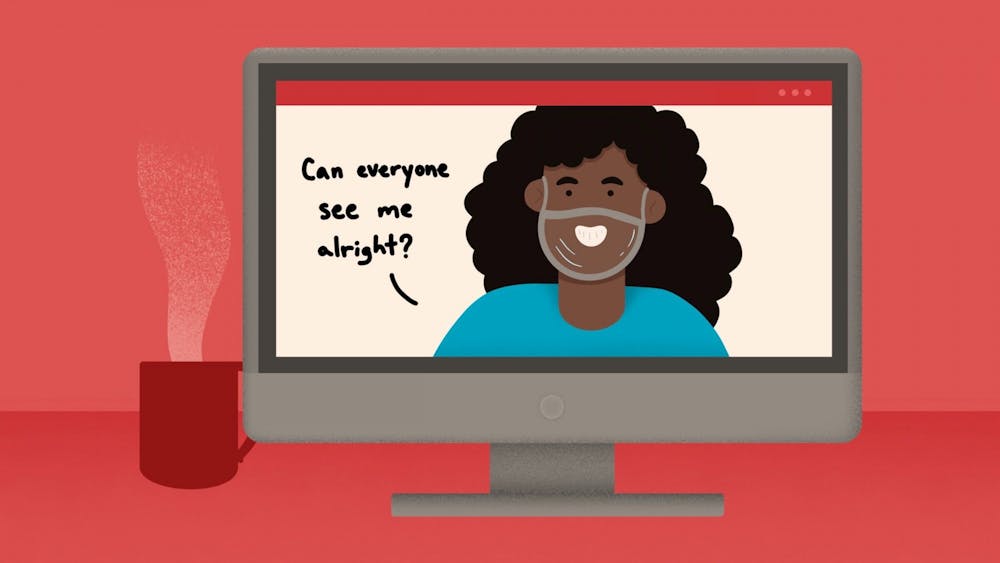With a new academic year beginning amid the COVID-19 pandemic, IU administration is granting accommodations for deaf and hard of hearing students. But, much of the responsibility still falls on those students to ensure they have access to materials such as clear masks or interpreters for virtual meetings.
Debbie Gessinger, an American Sign Language senior lecturer of the Department of Speech, Language and Hearing Sciences, said education isn’t equal for deaf and hard of hearing students during the pandemic because of the added communication barriers. From the beginning they have to coordinate with the Office of Disability Services for Students in order to receive the classroom support they need.
“Deaf students have so much preparation work to do ahead of time,” Gessinger said through an interpreter. “There are lots of different details that need to be accounted for ahead of time.”
According to the National Deaf Center, it would be ideal for universities to issue clear face masks for reducing language miscommunication. IU has provided cloth face masks to students, but they do not have a clear panel.
Gessinger said mouth morphemes, or shapes of the mouth that convey different meanings of a word, are vital to ASL but difficult to discern under the standard cloth mask.
“The grammar of American Sign Language is shown through the facial expressions,” Gessinger said. “Deaf people are used to seeing everyone’s faces to be able to communicate clearly.”
The DSS office is distributing clear face masks to deaf or hard of hearing students who have an in-person class. Then, the students are expected to pass along the mask to their instructor.
The office is providing teaching strategies to instructors of deaf or hard of hearing students as well. Reviewing the strategies is not mandatory for professors at IU.
Some of the office’s suggestions in training include how to conduct an accessible Zoom meeting or how to utilize speechreading, access coordinator Debbie Anderson said.
“We ask instructors to not provide verbal instruction with their backs to the class when possible and to make arrangements with the student to receive clarification on the material presented in circumstances where they are not able to face the class,” Anderson said in an email interview with IDS.
The National Deaf Center recommends providing remote services in all classes with deaf or hard of hearing students to minimize some of the complications that arise with learning during a pandemic. Professors can use Zoom, which supports forms of live captioning, or post a prerecorded lecture and provide a transcript. The center advocates for instructors to work with their deaf or hard of hearing students individually to determine the best course of action.
There are minor ways hearing students can support deaf or hard of hearing students, such as investing in a clear mask or offering to take notes, Gessinger said. She said the task of making education accessible should belong to the university.
“To an extent, it’s the faculty and the university’s responsibility to provide what students need in class,” Gessinger said. “But, it really is going to just depend on the students and their relationships with one another.”
This article has been updated for clarification.




